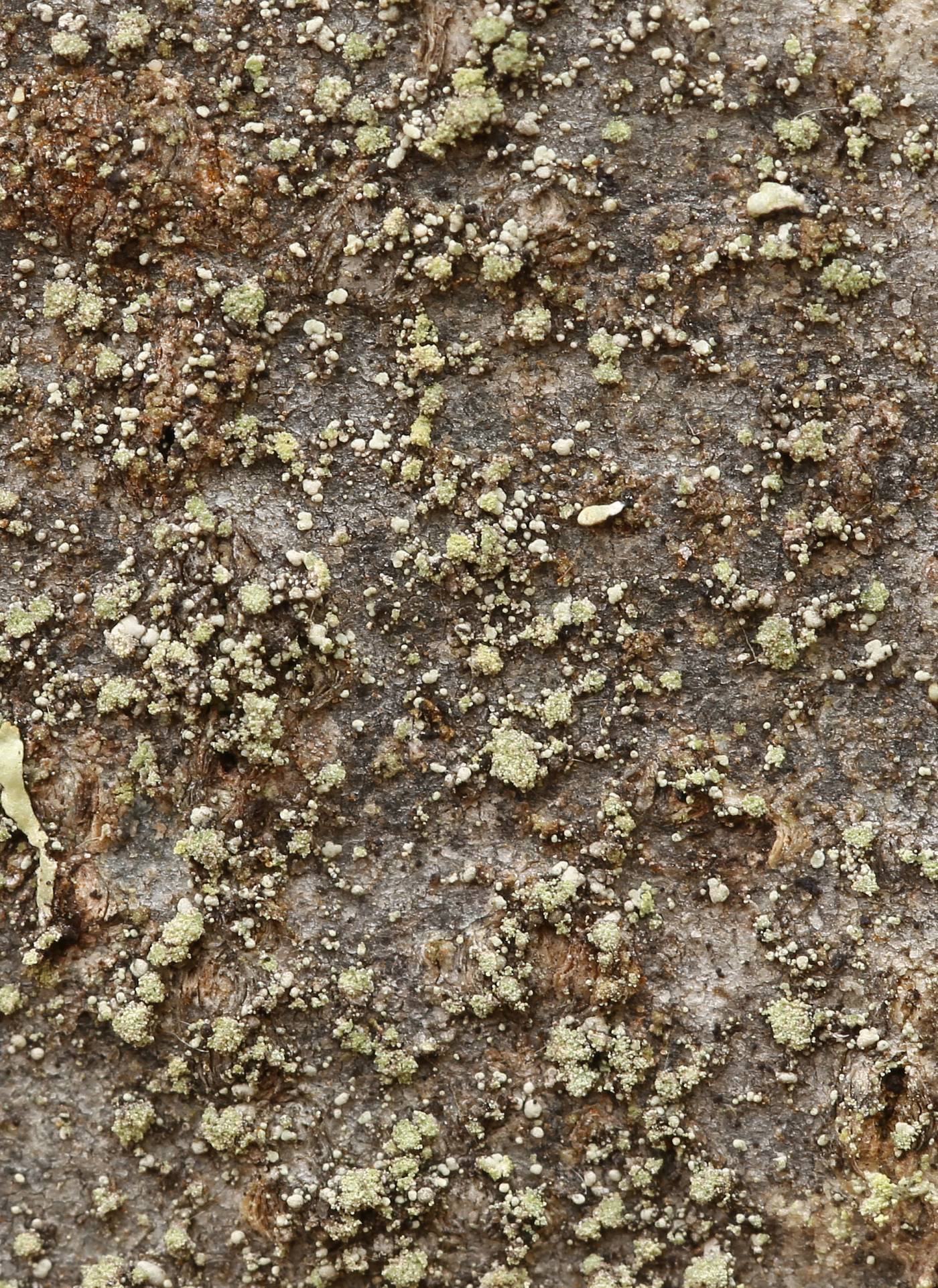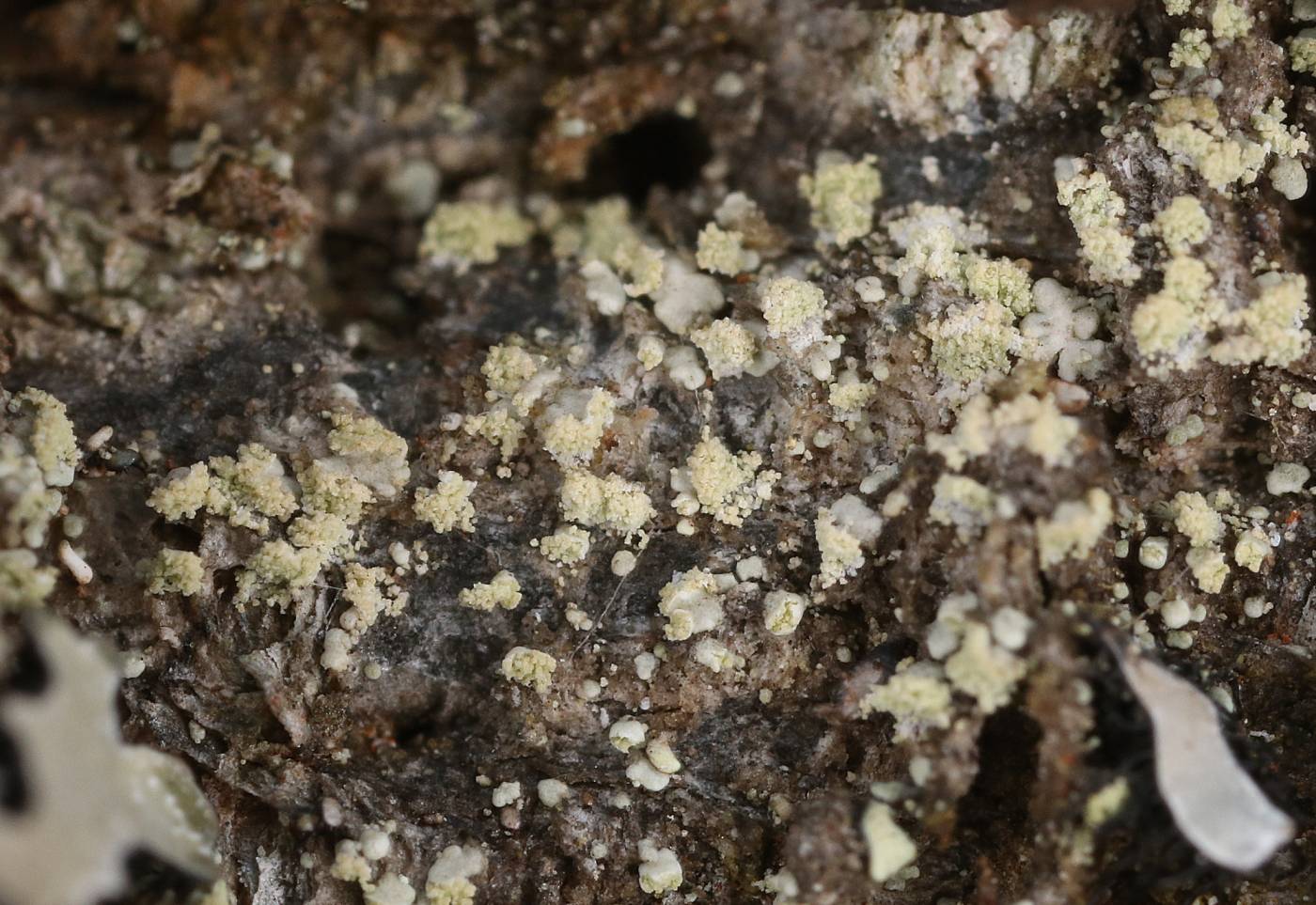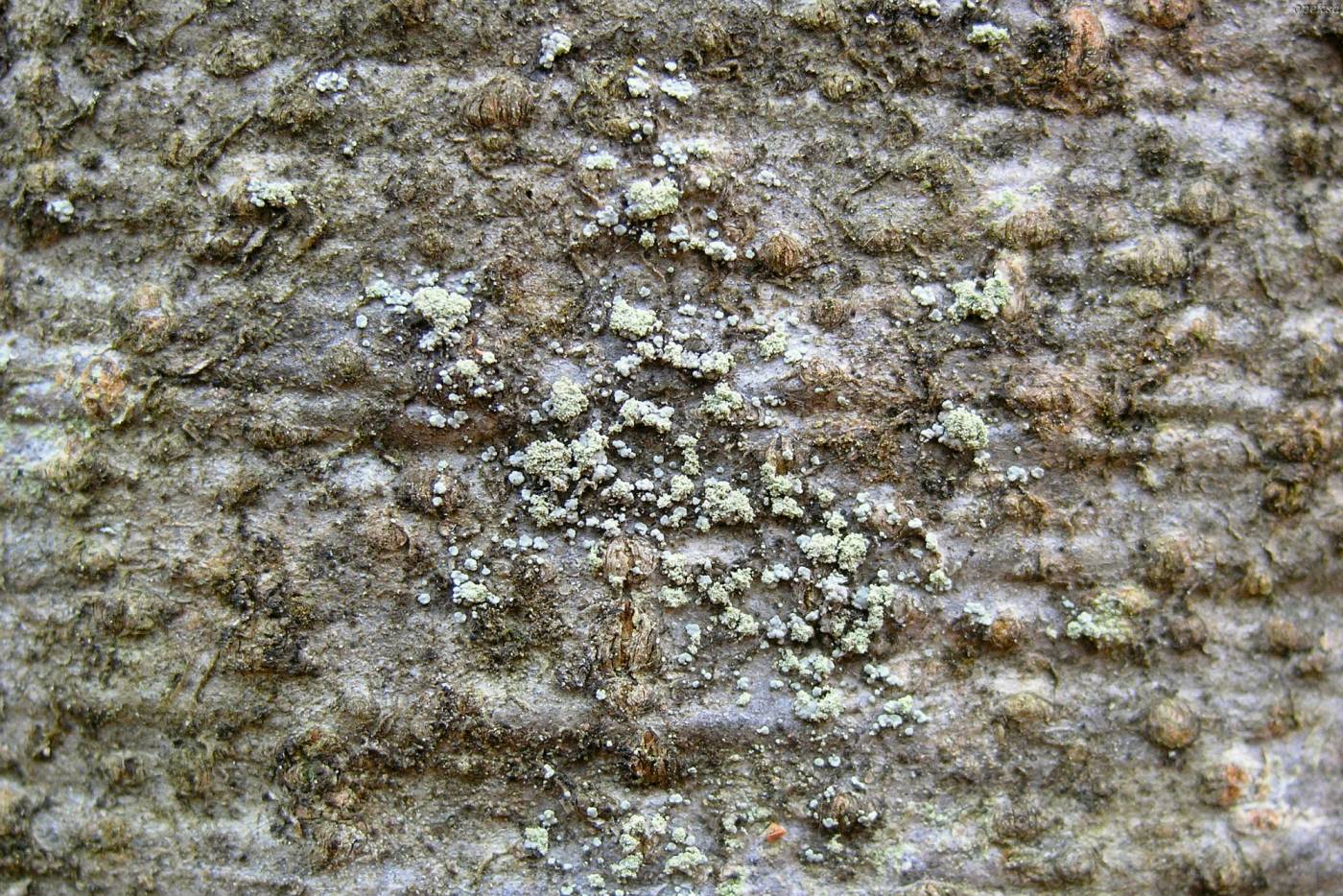An epiphytic lichen, always sterile. Its thallus consists of pale grey-white diffuse areoles or circular squamules, sometimes slightly ascending at the margins. It might form greenish to yellowish soredia in marginal labriform soralia. Soralia might also be circular, almost spherical and conspicuously large, in such cases the thallus under them is not apparent. Toensbergia leucococca contains alectorialic acid, which turns pink with time in herbarium. Due to this characteristic, it was discovered as an accompanying species in several herbarium specimens of other lichens from the first half of the 20th century (Palice 1999).
Toensbergia leucococca is mainly found in humid mountain boreal forests. It usually grows on deciduous trees with smooth and acidic bark (mainly beech and rowan), rarely on conifers (a single historical finding by A. Hilitzer) and, outside the Czech Republic, also on wood (Tønsberg 1992). It is easily overlooked because it grows in mosaics with other lichens or resembles their initial stages. It is rare in the Czech Republic, only known from humid montane forests above 1000 m a. s. l. from the Šumava Mts.
Literature: Palice Z. (1999): New and noteworthy records of lichens in the Czech Republic. – Preslia 71: 289–336. Tønsberg T. (1992): The sorediate and isidiate, corticolous, crustose lichens in Norway. – Sommerfeltia 14: 1–331.
taxonomic classification:Ascomycota → Lecanoromycetes → Rhizocarpales → Sporastatiaceae → Toensbergia
most frequented synonyms:Pycnora leucococcaRed List (Liška & Palice 2010):VU – vulnerable
Red List (Malíček 2023):C3 – endangered
Occurrence in the Czech Republic
All records: 17, confirmed 16. One click on a selected square displays particular record(s), including their source(s).


